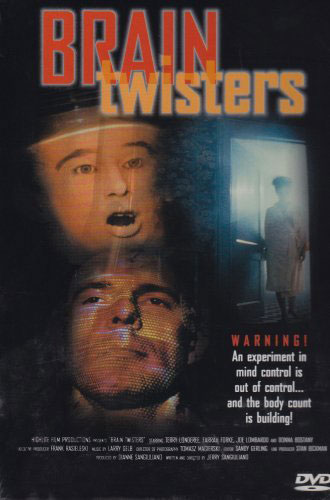There isn’t a successful Italian film director from the 20th century that doesn’t have at least one Hollywood ripoff in their filmography. It was practically de rigueur over there. But, no filmmaker did it with quite the shamelessness of Bruno Mattei, and none of his movies approached the level of outright thievery seen in Terminator II.
Trademark law is obviously looser in Italy. Over there, production companies can market and release a movie as a sequel to an unrelated production. This movie is not a sequel to The Terminator, James Cameron’s blockbuster from 1984. But it was marketed as such, down to a poster that evokes Arnold Scwarzenegger’s menacing, uncanny cyborg face. Everyone involved, including producer Franco Gaudenzi, knew how disingenuous it all was, because this flick wasn’t released in the United States until 2018, and then under the title Shocking Dark. Continue reading “Terminator II, aka Shocking Dark”

 What a piece of garbage. Take everything one knows about a flick from The Asylum or one of SyFy’s more meager efforts, and then scale those expectations downwards. This is a movie that exists, and little more. It has actors and actresses — vets gasping for one last breath of air before their careers go under, and young hopefuls, their dreams of stardom shattered by the cold, hard reality of a movie destined for the bargain DVD bin at gas stations and bodegas.
What a piece of garbage. Take everything one knows about a flick from The Asylum or one of SyFy’s more meager efforts, and then scale those expectations downwards. This is a movie that exists, and little more. It has actors and actresses — vets gasping for one last breath of air before their careers go under, and young hopefuls, their dreams of stardom shattered by the cold, hard reality of a movie destined for the bargain DVD bin at gas stations and bodegas. Once upon a time, Roger Corman held the title of most shameless filmmaker in Hollywood. It seemed there wasn’t any low to which he would stoop in order to make a buck, often at the expense of his movies. But, there was still liveliness in his productions. Corman could make a good movie, and he had an eye for talent. The young, hungry filmmakers he had in his stable could be relied upon to repair much of the damage caused by Corman’s ruthless frugality.
Once upon a time, Roger Corman held the title of most shameless filmmaker in Hollywood. It seemed there wasn’t any low to which he would stoop in order to make a buck, often at the expense of his movies. But, there was still liveliness in his productions. Corman could make a good movie, and he had an eye for talent. The young, hungry filmmakers he had in his stable could be relied upon to repair much of the damage caused by Corman’s ruthless frugality. Dr. Phillip Rothman (Terry Londeree) has a problem. The electronics company backing his neurological research isn’t happy with its pace, so they’re pulling his funding. The research involves showing flashing images to people to stimulate certain areas of the brain. The idea is that the company will incorporate the fruits of this research into its videogames, to give players a mental kick while playing, or possibly to get them hooked on it. The whys of the research are less important than the fact the experiments are turning Rothman’s student test subjects into murderous lunatics.
Dr. Phillip Rothman (Terry Londeree) has a problem. The electronics company backing his neurological research isn’t happy with its pace, so they’re pulling his funding. The research involves showing flashing images to people to stimulate certain areas of the brain. The idea is that the company will incorporate the fruits of this research into its videogames, to give players a mental kick while playing, or possibly to get them hooked on it. The whys of the research are less important than the fact the experiments are turning Rothman’s student test subjects into murderous lunatics.